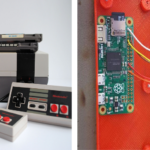

Do you remember when Rock Band and Guitar Hero both arrived on the gaming scene, and suddenly everyone was obsessed with singing and playing music, acting like their skills at playing the guitar or drums in the game could carry over to real life? My personal claim to fame was scoring a 100% on vocals in the Expert Level for Bon Jovi’s “Wanted Dead or Alive” (80s rock is my jam). This is sort of how I picture Microsoft Flight Simulator, but with players thinking they could actually fly planes, and not just shred an axe. However, never having actually played it before, I’m not certain. Perhaps unlike Guitar Hero, however, this game, first released all the way back in 1982, is well-known for its realism, “from the aircraft to the flight performance to the geographical world around it,” according to Tom’s Guide.
“Microsoft Flight Simulator is the next generation of one of the most beloved simulation franchises. From light planes to wide-body jets, fly highly detailed and stunning aircraft in an incredibly realistic world. Create your flight plan and fly anywhere on the planet. Enjoy flying day or night and face realistic, challenging weather conditions,” the Microsoft website explains.
Wondering what this has to do with 3D printing? When there’s gaming, there’s controllers, and when you add 3D printing to the mix, you can come up with all kinds of controller hacks, adapters, extensions, mods, and accessories. Microsoft Flight Simulator 2020 was recently released, and costs $60 for the Standard Edition (with 20 different planes), $90 for Deluxe (24 aircraft), and $120 for Premium Deluxe (35 aircraft). So, you may not have much money left over to buy a decent flight stick or joystick with which to play the game. Or, like Rock Paper Shotgun writer Alice O’Connor said, you may “not [be] committed enough to buy one.”
“Turns out, you don’t need to. Just fire up the 3D printer you definitely have, and you can print out a HOTAS that snaps onto an Xbox One controller and connects to its trigger and thumbstick,” she continued. “That’s the wild new creation from Akaki Kuumeri, who has even shared the schematics so we can all spin filament into a HOTAS on our own 3D printers.”
HOTAS, for those who don’t know, is an acronym for hands on throttle-and-stick, which is the basic concept of putting switches and buttons on the flight control stick and throttle lever in the cockpit of an aircraft, so pilots don’t have to move their hands off the controls to fly and perform all other vital functions.
Artist, engineer, and designer Kuumeri used 3D printing to create a HOTAS joystick that snaps right on to an Xbox One controller, and shared everything on Thingiverse so other gamers with access to 3D printers can get in on the action.
“I know there’s a lot of people out there who are playing this game with their regular game pads because they don’t have a joystick controller to control the planes with,” Kuumeri said in a video. “In fact, I think a lot of joysticks are sold out currently because this game is so popular right now, and they’re quite expensive as well. So I thought I’d pitch in and roll my own with my 3D printer, and perhaps that could elevate or enhance your simulation experience.”

Kuumeri says it should only take about one afternoon and $10 to print this snap-on joystick.
To check for printer tolerance, he says you can try and print out the smaller test pieces first. But, if you do it right, all the parts should fit on one print bed; for reference, Kuumeri printed the parts for his joystick controller on an ENDER system. Everything was printed without supports, with 0.2 mm layers and 3 perimeters.
“You can print just the joystick or the throttle unit too,” he notes on Thingiverse.
All of the parts snap together easily, though he notes that you’ll need to rotate the hinge pieces 90º, where the shaft is the thinnest, before you snap them in. Then, slide in the controller, and voila!
“You have to trust me, but the funny shape that they make, it ends up transmitting the geometry perfectly,” Kuumeri said.
You can grease the joints with Vaseline for smoother, quieter operation, and adding a short rubber band through the mechanism’s special channels will give you extra spring tension.
Kuumeri also added instructions to Thingiverse for a standalone flight stick that includes dual throttles and pedals and is powered by an Arduino board, if you’re looking for a more challenging project. Check out the video below if you want some tips for smooth flying, or if you’re interested in 3D printing a throttle lever to go with your joystick.
If you're looking to get architectural 3D animation in the USA, our service provides an exceptional way to bring your architectural concepts to life through dynamic, immersive visuals. Through our platform, you can easily request high-quality 3D animations that showcase your designs in motion, offering a detailed view of your project from multiple angles and perspectives. Whether it's for a real estate development, a commercial building, or an urban planning project, our expert team ensures that every detail is captured in a visually compelling animation.
Through our website, you can seamlessly get architectural 3D animation tailored to your project’s specific needs. With our help, you can offer potential clients or investors an engaging experience that goes beyond static images. By integrating CGI animations with real-world settings, lighting, and textures, our team creates a lifelike experience that allows your audience to interact with your project as though it were already built. This service is perfect for presenting complex designs in a clear, visually attractive way that stands out in the competitive architectural market.




